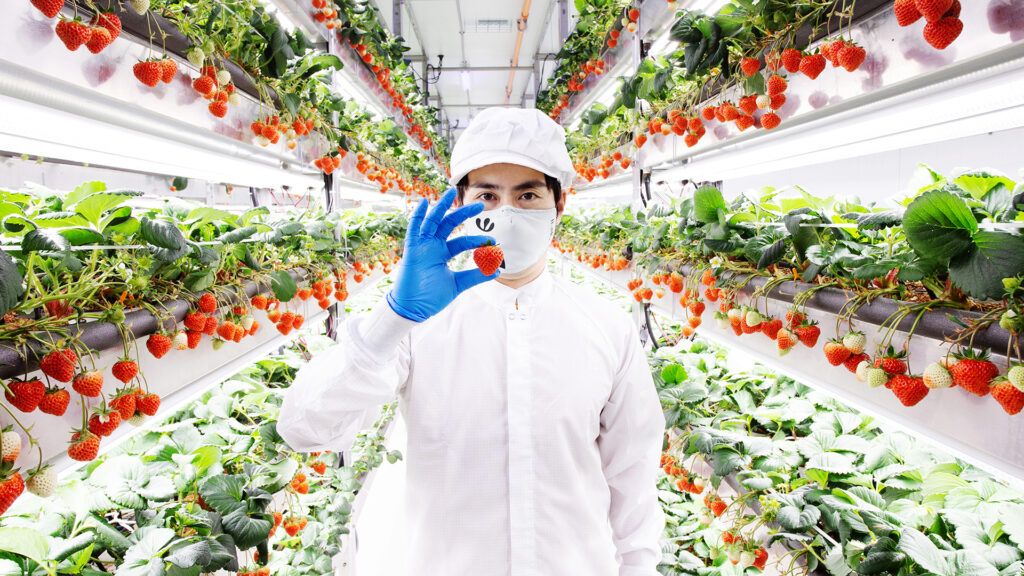Alexandre Stephan is a partner at SP Ventures, an early-stage fund investing in agrifoodtech across Latin America.
More than 800 million people globally face hunger. Simultaneously, the world wastes or loses about one third of its entire food supply. Latin America accounts for 6% of these losses, according to the United Nations Food & Agricultural Organization (FAO); the Latin America region loses and/or wastes roughly 15% of its total food supply each year.
However, the region is also home to a wealth of potential solutions that when implemented can reduce food waste along the supply chain. At SP Ventures we divide these solutions into four main verticals: upcycling; preventing waste; increasing shelf life; and avoiding waste.
Around Latin America and the Caribbean, startups are using technology to develop food waste solutions that fall into one or more of these categories.
The numbers: food loss and waste in Latin America
Latin America is home to more than 650 million people and is rich in both natural resources and food. But as mentioned above, the region wastes about 15% of its food annually, and the Pan American Health Organization estimates that hunger will impact 67 million people in the region by 2030.
The main causes of food waste in Latin America are overproduction, inadequate storage and transportation systems, lack of education and awareness, and inefficient distribution networks. According to FAO sources, the total losses and waste in the region occur at every stage of the food chain: 27% in production; 22% during handling and storage; 6% at the processing level; 17% in marketing and distribution; and 28% at the consumer level.
Worldwide, approximately 1.3 billion tonnes of food is lost or wasted each year, including about 45% of all fruit and vegetables, 35% of fish and seafood, 30% of cereals, 20% of dairy products, and 20% of meat. All of this translates to about $940 billion of economic losses annually.
The losses are even greater when we consider the amount of scarce resources such as land, water, and energy used to produce the food. Agriculture accounts for over a third of global land area and over 70% of freshwater withdrawals. Food waste is also responsible for 8% of global greenhouse gas emissions, deforestation, and soil degradation, and also exacerbates food insecurity and poverty in many parts of the world, including Latam.
Innovative food waste solutions in Latin America
There are many potential solutions that can be implemented to reduce food waste along the supply chain. At SP Ventures we divided these solutions in four main verticals:
Upcycling
Upcycling is the process of repurposing food waste or by-products into new and valuable items. There are several upcycling approaches companies can use with food waste materials, including:
- Recycling – Overripe or blemished produce that would otherwise go to waste can be transformed into snack products, such as chips or crackers.
- Composting – Breaking down organic waste such as food into compost provides a natural fertilizer for plants.
- Anaerobic digestion – This process uses microorganisms to break down organic waste into biogas, which can be used as a source of renewable energy.
Examples of companies tackling this challenge in Latin America: Geo Biogas, Auma Energia and Fotortec.
Preventing waste
Food companies that generate better planning and quality controls tend to waste less. Some technology gaining momentum can be seen below:
- In-store software systems – Many startups now provide technology solutions to help food business operations measure, track and reduce their food waste.
- Predictive modeling – This technology uses data and algorithms to predict food demand, limiting overbuying and food waste.
- Food traceability – This technology helps to track the journey of food from farm to table, providing transparency and accountability in the food supply chain. This can help to prevent food waste by ensuring that food is handled and stored correctly at every step of the way.
Examples of companies tackling this challenge in Latin America: Clicampo, ZoomAgri, Suflex, Aravita, Ucrop.It, Ecotrace and Agtrace.
Increasing shelf life
This approach can reduce food waste at the consumption stage by allowing perishable foods to last longer. There are several technologies that can be used to increase the shelf life of food products, including:
- Edible coatings – These are edible, protective layers added to fruits and vegetables to prevent moisture loss and extend their shelf life.
- Controlled/Intelligent packaging – Certain packaging materials can respond to changes in the environment, such as temperature and humidity, to extend the shelf life of food.
- High-pressure processing (HPP) – This is a non-thermal pasteurization process that uses high pressure to kill bacteria and extend the shelf life of food.
- Lyophilization or freeze-drying – Companies freeze food then remove the water via a process of sublimation. This can help to preserve the quality and extend the shelf life of food.
Examples of companies tackling this challenge in Latin America: Polynatural, Save Fruit, Nanox, Bio Natural Solutions and BeeTechnology.
Avoiding Waste
Avoiding waste means repurposing products that would normally go to waste into sales or donations. Some initiatives include:
- Apps connecting consumers with local businesses that have surplus food for sale at reduced prices
- Companies that deliver “imperfect” food directly to consumers’ homes
- Companies that connect households with surplus food with their neighbors, reducing waste by ensuring that the food goes to people who can use it
- Platforms redistribute surplus food to other businesses such as hospitals, schools, NGOs and charities.
Examples of companies tackling this challenge in Latin America: Food to Save, B4Waste, Cheaf, GoodMeal, Perfekto, Mercado Diferente, Gooxy and Infineat.
SP Ventures, in its most recent fund, AGVII, has a portfolio of companies that play an important role in fighting food waste. Two interesting examples are Clicampo and ZoomAgri.
Ag marketplace Clicampo offers a suite of tech solutions that enable Brazil’s small- and medium-sized farmers and food producers to sell directly to food businesses. By removing intermediaries along the supply chain (e.g., distributors), Clicampo is able to help reduce fruit and vegetable waste from 40% to just 4%.
The company says it has been able to do this while delivering 40% more earnings for SMB farmers and reducing costs for food businesses by 10%.
Argentina-based ZoomAgri has digitized the food inspection process for grain, leading to improved real-time controls over this commodity. Being able to quickly diagnose the states of grains allows companies to quickly decide when to distribute grain to avoid spoilage and when to keep storing it.
A ‘multifaceted challenge’
In Latin America as in the rest of the world, reducing food loss and waste is a complex and multifaceted challenge. It is also a growing issue in the food and beverage industry. As sustainability becomes more of a priority for CPG companies and consumers, many businesses are looking for ways to reduce their waste. However, CPGs alone will not be able to change the full picture. It is necessary to work across sectors, to significantly reduce the amount of food that goes to waste and create a more sustainable and equitable food system.
At SP Ventures we believe that the challenges of combating food waste in Latin America demands coordination and solutions from a wide range of stakeholders, such as entrepreneurs, governments, CPGs, investors and consumers. We see a fertile investment market for the future within the ag and food sectors and we will continue to nurture the local ecosystem towards this goal.
[Editor’s note: learn more about food waste solutions and other agrifoodtech developments in Latin America at the World Agri-Tech South America Summit in Brazil on June 20–21.]
Source link
Author Sponsored Post





